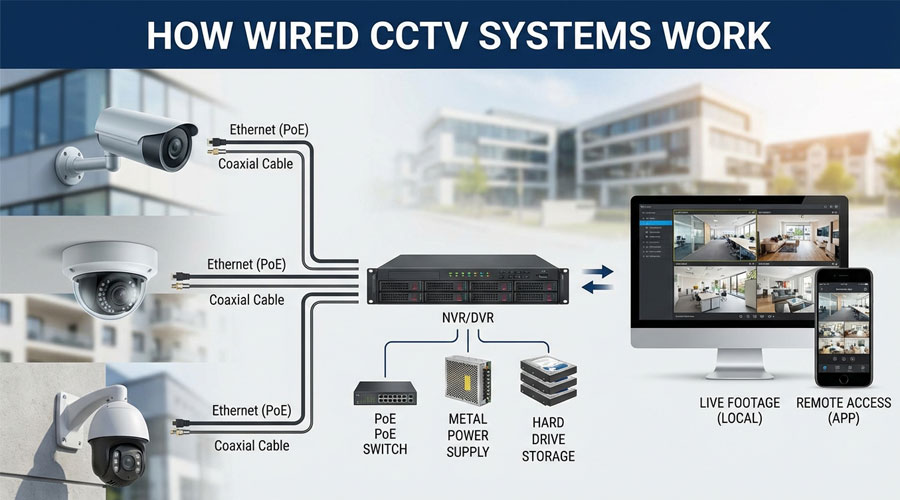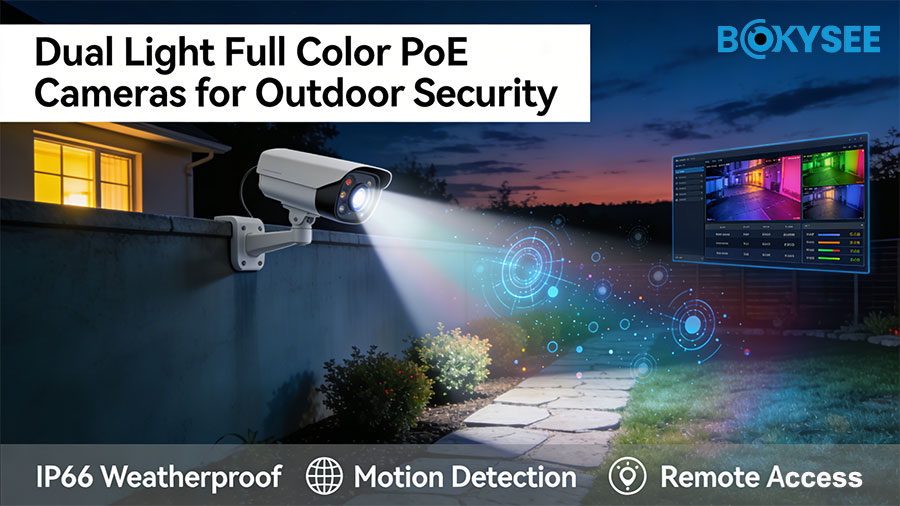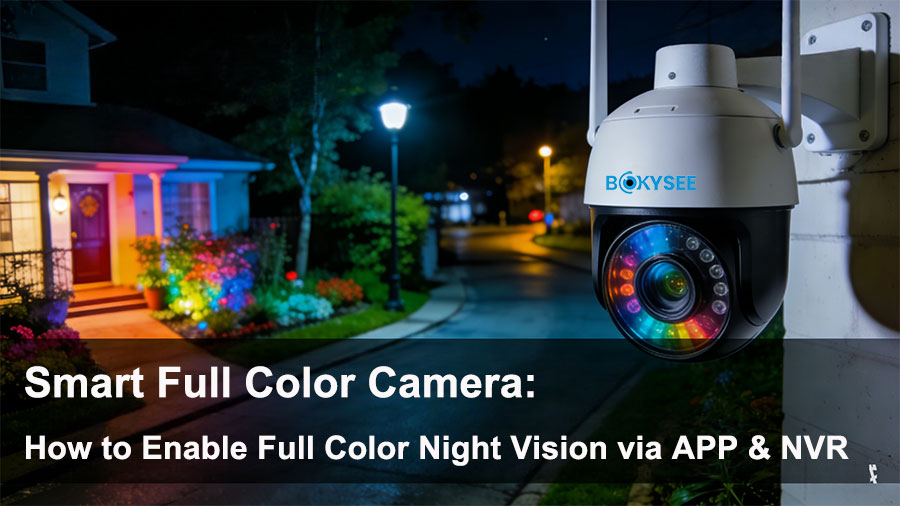What is CCTV Chipset?

CCTV chipset: It’s the main part of a CCTV system that processes video signals from surveillance cameras, allowing high-quality footage transmission and storage. Components and features of a CCTV chipset: It includes the processor, which executes instructions and performs calculations. There’s also memory for storing important data, a video encoder/decoder for converting video signals, and various input/output interfaces to connect cameras, monitors, and storage devices. Assessing project requirements: Determine the scale of your system, desired resolution and image quality, if you need advanced video analytics, and the storage and bandwidth requirements. By evaluating your specific needs, you can choose the right chipset to meet your surveillance goals and ensure optimal performance.
Different CCTV Chipset Solutions

Source from Unsplash
When it comes to CCTV chipsets, there are two main types: Analog and IP.
Analog chipsets convert the camera’s analog signal into a digital one for transmission and recording. They are compatible with existing analog infrastructure and are more affordable. But they have lower image quality, limited scalability, and may not integrate well with other systems.
IP chipsets use digital technology for video transmission and recording. They offer superior image quality, greater scalability and flexibility. They can easily integrate with other security systems and offer advanced functionalities like triggering alarms or sending notifications.
So, when choosing a CCTV chipset, consider whether compatibility and cost are important (in which case analog chipsets may be suitable), or if image quality, scalability, and integration capabilities are more important (in which case IP chipsets are the right choice).
Choosing the Right Chipset Solution
When choosing a chipset solution for your CCTV project, consider the image quality and resolution requirements. Determine whether you need standard definition, high definition (HD), full HD, or even 4K resolution.
Evaluate the capabilities of different image sensors and lenses to understand their impact on image quality. Assess low-light performance, lux ratings, and infrared (IR) capabilities for night vision.
Consider video compression technology. Compare H.264 and H.265 codecs, with H.265 offering better compression and reducing bandwidth and storage requirements.
Analyze your network requirements and decide whether wired or wireless connectivity is more suitable. Consider Power over Ethernet (PoE) if opting for wired connectivity.
Explore intelligent features and analytics for added functionality. Look for advanced surveillance, face detection, object tracking, and motion detection capabilities.
Evaluate the manufacturer’s reputation, support, and warranty options. Research their track record and read customer reviews to ensure reliability and product quality. Technical support should be available in case of any issues.
Considering these factors will help you choose the right chipset solution for your CCTV project.
Popular CCTV Chipset Solutions in the Market
When it comes to CCTV chipset solutions in the market, there are several popular options available. Let’s take a look at some leading manufacturers and their featured chipsets:
– SONY:
Sony is a well-established brand known for its contributions to the CCTV chipset market. Their Exmor series chipsets, like the Exmor R and Exmor RS models, are highly regarded for their exceptional performance in low-light situations and high dynamic range capabilities. These chipsets offer excellent image quality, reduced noise, and advanced signal processing algorithms.
– FH (Hisilicon):
FH, a subsidiary of Huawei, is a prominent chipset manufacturer in the security industry. Their Kirin and HiSilicon series chipsets are widely used in surveillance applications. Known for their powerful video encoding capabilities, low power consumption, and support for advanced features like video analytics and AI, FH chipsets provide enhanced accuracy in motion detection and object recognition.
– Ingenic:
Ingenic is an emerging player in the CCTV chipset market, offering a balance of performance and affordability. Their M30 and T30 series chipsets demonstrate capable video encoding and compatibility with a variety of image sensors. Ingenic chipsets often provide cost-effective solutions without compromising on video quality and reliability.
– XM (Nextchip):
XM chipsets, manufactured by Nextchip, have gained popularity due to their cost-effectiveness and robust performance. These chipsets are commonly used in entry-level and mid-range CCTV cameras. XM chipsets excel in real-time video processing, efficient compression algorithms, and support various features such as video analytics, video stabilization, and motion detection.
When comparing these popular CCTV chipset solutions, it is important to consider factors like image quality, low-light performance, video processing capabilities, power consumption, and support for advanced features like AI and video analytics. Assessing your project requirements and priorities will help you make an informed decision about the most suitable chipset solution for your needs.
How to Choose a Security Camera System for Your Business?

When selecting a security camera system for your business, there are two important factors to consider.
First, you need to identify the specific security needs of your business. This includes determining which areas of your business need to be monitored, such as entrances, parking lots, or sensitive workspaces. You should also think about whether you need the cameras to capture high-resolution images for identification purposes, if you need them to work in low-light conditions, and if audio capabilities are necessary for capturing conversations.
The second factor to consider is the integration of the CCTV chipsets with other security components. A comprehensive security system requires the integration of different security elements such as access control systems and alarms. When choosing a CCTV chipset, make sure it is compatible with your existing security infrastructure. This integration allows for a unified approach to security, allowing for seamless communication between different components.
By assessing your security needs and considering the integration of CCTV chipsets with other security components, you can design an effective and efficient security camera system for your business. This will help protect your assets and create a safe environment for your staff and customers.

Analog Cameras vs IP Cameras

When deciding on a CCTV chipset solution, you’ll encounter two options: analog cameras and IP cameras.
Analog cameras are affordable and easy to use, converting footage into analog signals that are transmitted via coaxial cables. On the other hand, IP cameras offer advanced features and connect directly to an IP network. They allow for remote access, have higher resolutions, and offer video analytics and integration with other devices.
Considerations for choosing between the two include cost, image quality, flexibility and scalability, network infrastructure, and additional features. Analog cameras are cost-effective upfront, but IP cameras may require additional networking and storage equipment. IP cameras provide superior image quality with higher resolutions. IP cameras also offer greater flexibility and scalability, allowing for easy expansion and remote monitoring. Consider your existing network infrastructure and the need for integration and advanced features.
Ultimately, the choice between analog and POE IP cameras depends on your project’s specific requirements, budget, and long-term goals. Analyze these factors to determine which CCTV chipset solution is best suited for your needs.
Conclusion:
In conclusion, choosing a CCTV chipset solution requires thorough research and evaluation. Consider image quality, processing power, and compatibility to make an informed decision that aligns with your project’s specific requirements. Avoid rushing and prioritize comprehensive understanding of each chipset option to ensure optimal performance and accommodate future growth.







